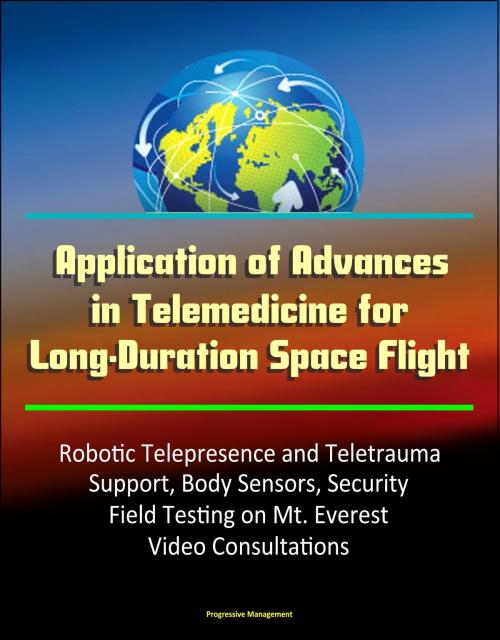Application of Advances in Telemedicine for Long-Duration Space Flight: Robotic Telepresence and Teletrauma Support, Body Sensors, Security, Field Testing on Mt. Everest, Video Consultations
Nonfiction, Health & Well Being, Medical, Specialties, Clinical Medicine, Science & Nature, Technology, Aeronautics & Astronautics| Author: | Progressive Management | ISBN: | 9781310545252 |
| Publisher: | Progressive Management | Publication: | April 29, 2015 |
| Imprint: | Smashwords Edition | Language: | English |
| Author: | Progressive Management |
| ISBN: | 9781310545252 |
| Publisher: | Progressive Management |
| Publication: | April 29, 2015 |
| Imprint: | Smashwords Edition |
| Language: | English |
Professionally converted for accurate flowing-text e-book format reproduction, this NASA report explores the topic of telemedicine, a technologically driven field that encourages innovation and creative solutions. The literature highlights advancements in the field of telemedicine in each of four categories suggested: technical, clinical, human, and cost. Significant progress is being made toward the adoption of smart machines, high-quality applications, ergonomically sound devices, and cost-effective interoperable systems that improve the delivery of care. Solutions have resulted in patients with healthier outcomes, improved processes for provider care delivery, and extension of healthcare to remote areas. The current reach and breadth of telemedicine show substantial capacity to address the healthcare needs of remote areas, extreme environments, and the medically underserved. As telemedicine evolves, it is important that the needs of the patient and operator remain in the foreground. New technologies and processes are developing. Systems continue to become more interoperable. Costs of implementation decrease. Human operation must remain the foundation. Telemedicine is the result of collaboration of minds, interest groups, and specialized interests. The goal is to increase human resources for the purpose of better and preserve human life in extreme environments.
Professionally converted for accurate flowing-text e-book format reproduction, this NASA report explores the topic of telemedicine, a technologically driven field that encourages innovation and creative solutions. The literature highlights advancements in the field of telemedicine in each of four categories suggested: technical, clinical, human, and cost. Significant progress is being made toward the adoption of smart machines, high-quality applications, ergonomically sound devices, and cost-effective interoperable systems that improve the delivery of care. Solutions have resulted in patients with healthier outcomes, improved processes for provider care delivery, and extension of healthcare to remote areas. The current reach and breadth of telemedicine show substantial capacity to address the healthcare needs of remote areas, extreme environments, and the medically underserved. As telemedicine evolves, it is important that the needs of the patient and operator remain in the foreground. New technologies and processes are developing. Systems continue to become more interoperable. Costs of implementation decrease. Human operation must remain the foundation. Telemedicine is the result of collaboration of minds, interest groups, and specialized interests. The goal is to increase human resources for the purpose of better and preserve human life in extreme environments.















